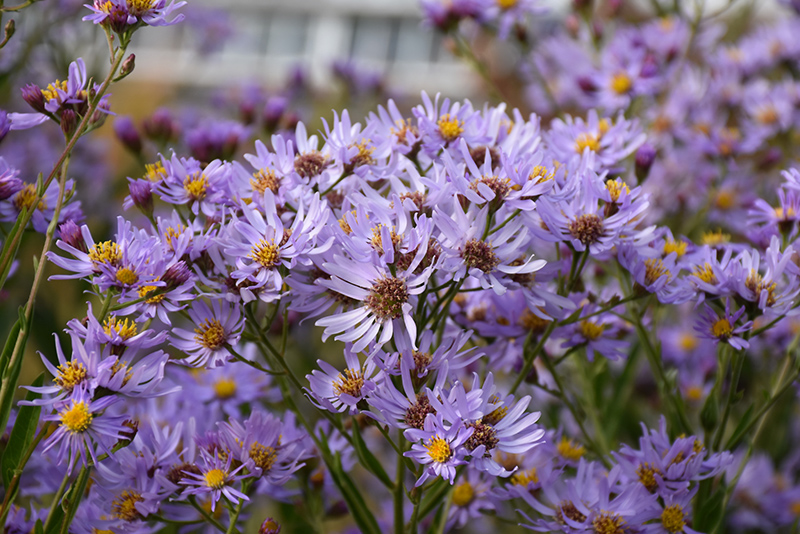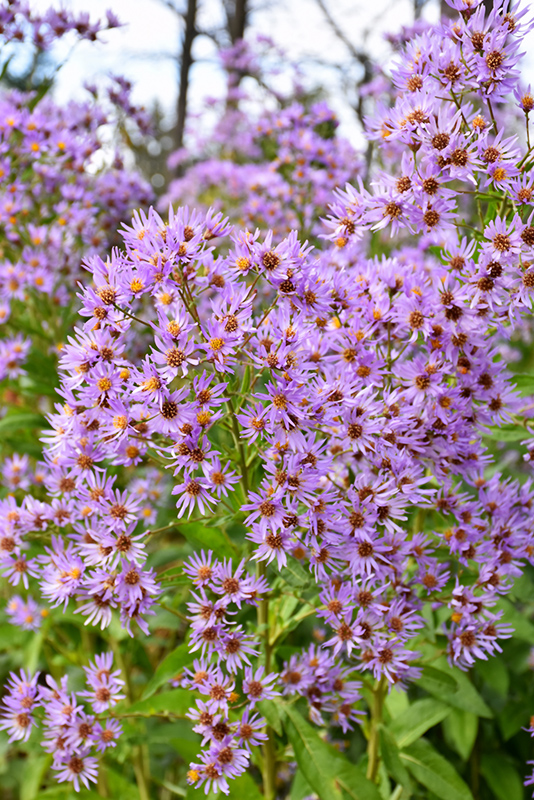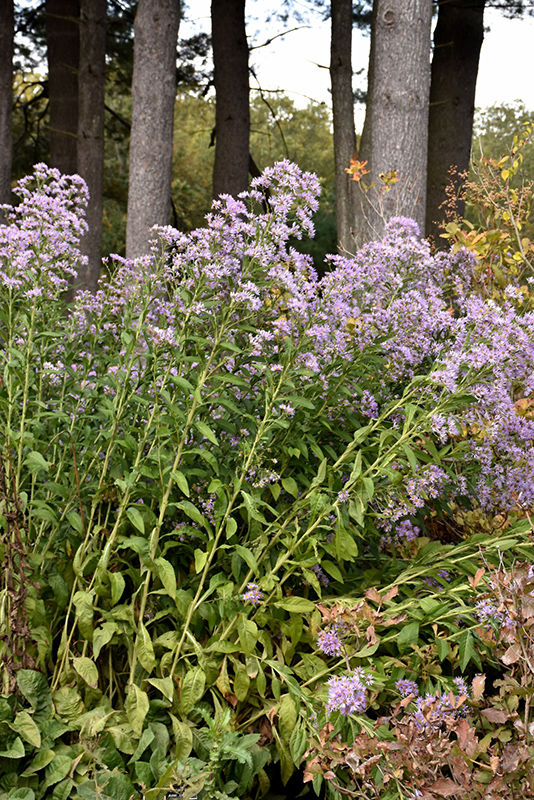Height: 6 feet
Spread: 3 feet
Sunlight:
![]()
![]()
Hardiness Zone: 2b
Other Names: Tartarinow's Aster
Description:
This variety is an erect, tall growing species with distinctive, large paddle shaped lower leaves that get smaller higher up on the plant; rounded clusters of violet-blue flowers in fall until frost; can spread aggressively, best to contain rhizomes
Ornamental Features
Tartarian Aster has masses of beautiful clusters of violet daisy flowers with blue overtones and yellow eyes at the ends of the stems from late summer to late fall, which are most effective when planted in groupings. The flowers are excellent for cutting. Its large narrow leaves remain dark green in color throughout the season.
Landscape Attributes
Tartarian Aster is a dense herbaceous perennial with an upright spreading habit of growth. Its relatively fine texture sets it apart from other garden plants with less refined foliage.
This is a relatively low maintenance plant, and is best cleaned up in early spring before it resumes active growth for the season. It is a good choice for attracting bees and butterflies to your yard, but is not particularly attractive to deer who tend to leave it alone in favor of tastier treats. Gardeners should be aware of the following characteristic(s) that may warrant special consideration;
- Spreading
- Disease
Tartarian Aster is recommended for the following landscape applications;
- Mass Planting
- Hedges/Screening
- General Garden Use
Planting & Growing
Tartarian Aster will grow to be about 6 feet tall at maturity, with a spread of 3 feet. It tends to be leggy, with a typical clearance of 1 foot from the ground, and should be underplanted with lower-growing perennials. The flower stalks can be weak and so it may require staking in exposed sites or excessively rich soils. It grows at a medium rate, and under ideal conditions can be expected to live for approximately 10 years. As an herbaceous perennial, this plant will usually die back to the crown each winter, and will regrow from the base each spring. Be careful not to disturb the crown in late winter when it may not be readily seen!
This plant does best in full sun to partial shade. It prefers to grow in average to moist conditions, and shouldn't be allowed to dry out. It is not particular as to soil type or pH. It is somewhat tolerant of urban pollution. This species is not originally from North America. It can be propagated by division.



